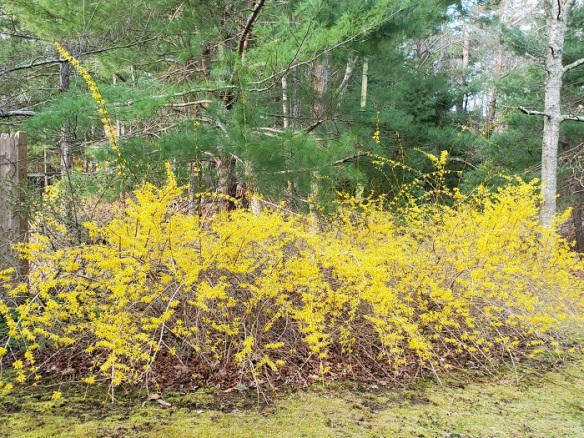 Sun, sand, and surf lure us back to the beach each summer. Whether we decide to stretch out and luxuriate or build castles, we might not notice that the threshold to another world beckons right at our feet.
Sun, sand, and surf lure us back to the beach each summer. Whether we decide to stretch out and luxuriate or build castles, we might not notice that the threshold to another world beckons right at our feet.
The waves, while hypnotizing us with sun sparkle, occasionally offer gifts: an abandoned home, an ancient creature. We examine these gifts or plunk them into our buckets and walk on without thinking too much about that underwater world or what’s lurking in its depths.
The ocean covers 71 percent of the Earth’s surface, yet 95 percent of it remains unexplored. In this otherworldly place that covers most of the planet, stars crawl on the ground. Fish fly through the watery skies. Lives more ancient and mysterious than ours climb its mountain ranges.
 Even the commonplace can be extraordinary. Horseshoe crabs are living fossils that have remained virtually unchanged for 350 to 400 million years. For comparison, humans have been roaming the Earth for about 200,000 years.
Even the commonplace can be extraordinary. Horseshoe crabs are living fossils that have remained virtually unchanged for 350 to 400 million years. For comparison, humans have been roaming the Earth for about 200,000 years.
Crabs communicate by drumming and waving their pincers. Scallops can swim by opening and closing their shells. Barnacles spend their lives standing on their heads and eating with their feet.
 Snorkelers are surprised to see visitors from the tropics adding their bright colors to the grayer New England ones. In one tropical tank at a local aquarium, northern red and frilled anemone grow like trees from a rocky terrain. Their pink and orange stump-like bodies billow out into delicate tentacles. A flying gunard flaps its fins as a bird would, appearing to fly over these trees and through the water.
Snorkelers are surprised to see visitors from the tropics adding their bright colors to the grayer New England ones. In one tropical tank at a local aquarium, northern red and frilled anemone grow like trees from a rocky terrain. Their pink and orange stump-like bodies billow out into delicate tentacles. A flying gunard flaps its fins as a bird would, appearing to fly over these trees and through the water.
 Striped searobins use their lower pectoral fins to walk along the seafloor while probing the bottom for food.
Striped searobins use their lower pectoral fins to walk along the seafloor while probing the bottom for food.  With warty skin and a humped profile, lumpfish may be difficult to find since they often blend in with the rocky bottom area. Their pelvic fins form a suction disk, allowing them to cling to rocks and other seafloor objects.
With warty skin and a humped profile, lumpfish may be difficult to find since they often blend in with the rocky bottom area. Their pelvic fins form a suction disk, allowing them to cling to rocks and other seafloor objects.
Cold-water, eel-like fish called “ocean pout” are sluggish and often hide in holes with only their heads protruding to watch for intruders. Their wide mouths and fleshy lips form a permanent pout and may remind visitors of some people they know.

 At fishing docks, harbor seals poke their heads up through the waves. They look like they’re examining us as much as we’re examining them.
At fishing docks, harbor seals poke their heads up through the waves. They look like they’re examining us as much as we’re examining them.
Endangered North Atlantic right whales and humpback whales feed at nearby Stellwagen Bank. Defenders of Wildlife estimates that there are about 350 North Atlantic right whales left in the world.
Earlier this year, an unusually large mass stranding occurred on Cape Cod between mid-January and mid-February with 179 dolphins stranded, according to the International Fund for Animal Welfare (IFAW). It was the largest single-species stranding event on record in the Northeast. Of the 179 stranded dolphins, 71 were found alive and 53 were successfully released by IFAW volunteers. By early March, the number of stranded dolphins for the year reached up to 190.
These days, marine animals are struggling to survive, whether it’s because of overfishing, accidentally getting caught in fishing nets, boat traffic or pollution. To them, the ocean isn’t a vacation place. It’s their only home.
Related:
International Fund for Animal Welfare (IFAW)
Oceana – Protecting the World’s Oceans
Defenders of Wildlife
 A sunburst of forsythia billows in the breeze. A rabbit hops along and stops to twitch her nose before darting into the yellow ruffled cave. A cardinal, so red that he glows, perches on top of the cave, adding heat to the flowered flame. He looks at you, then looks away, then looks at you again before leaping into the air with outstretched wings. Your heart leaps along with him. He adds color wherever he goes.
A sunburst of forsythia billows in the breeze. A rabbit hops along and stops to twitch her nose before darting into the yellow ruffled cave. A cardinal, so red that he glows, perches on top of the cave, adding heat to the flowered flame. He looks at you, then looks away, then looks at you again before leaping into the air with outstretched wings. Your heart leaps along with him. He adds color wherever he goes.








